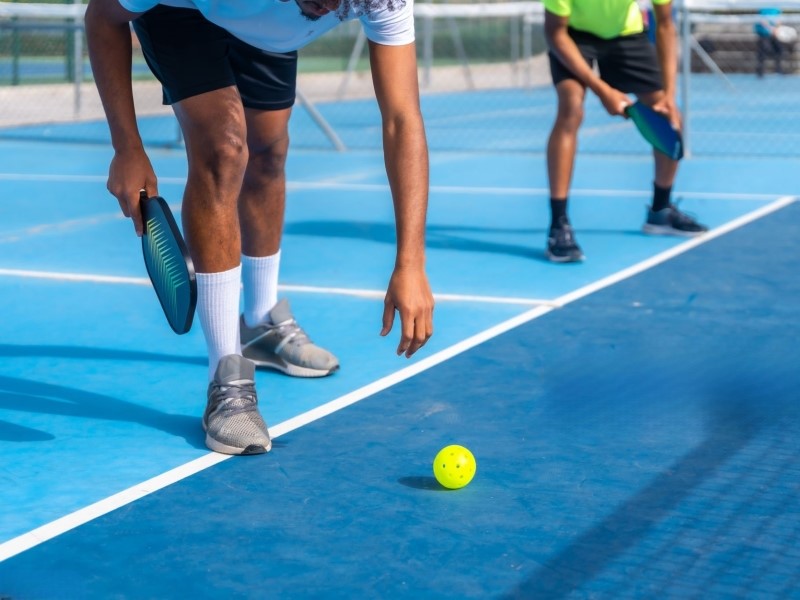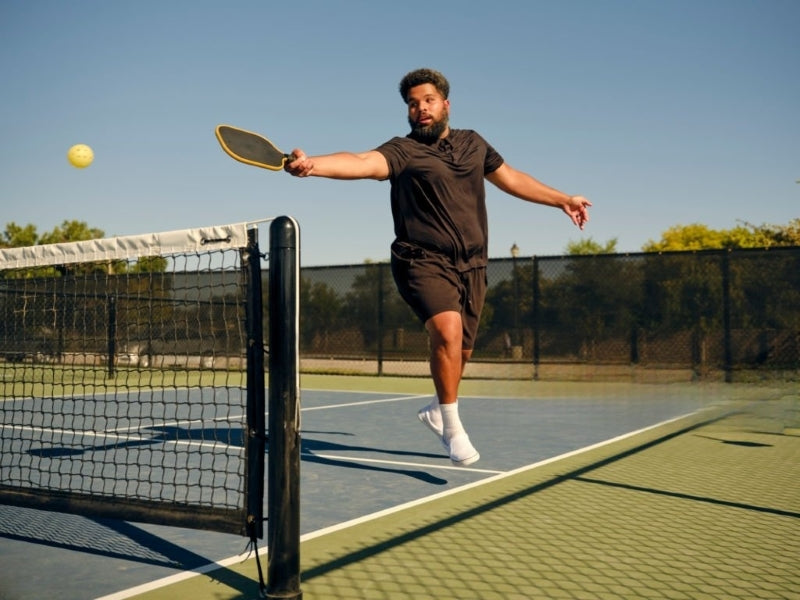As pickleball rapidly evolves and attracts players worldwide, one debate continues to gain attention: traditional scoring vs rally scoring in pickleball. Each system has its own unique rules, pacing, and impact on gameplay, and both have passionate supporters.
What Is Traditional Scoring in Pickleball?
Traditional scoring is the original and still the most widely used scoring method in pickleball, especially in recreational play and most sanctioned tournaments.
Key Features of Traditional Scoring:
- Only the serving team can score points.
- Games are typically played to 11 points, win by 2.
- Points are scored only when the serving team wins the rally.
- The serving team has two serve attempts (except at the start of the game).
- The server's number (1 or 2) and the team's score must be announced before each serve.
This system emphasizes serve control, making it more strategic and defensive. The rhythm of the game is different—momentum can shift more slowly since not every rally results in a point.
What Is Rally Scoring in Pickleball?

Rally scoring is an alternative system that awards a point on every rally, regardless of which team is serving. It is increasingly used in experimental formats, fast-paced recreational games, and some newer tournaments.
Key Features of Rally Scoring:
- Both serving and receiving teams can score points.
- Games are often played to 15 or 21 points, win by 2.
- The pace of the game is faster and more continuous.
- Each rally results in a point, reducing downtime.
- Often used in timed events or when court availability is limited.
Rally scoring is common in sports like volleyball and is now being tested more frequently in pickleball to accommodate growing participation and time constraints.
Side-by-Side Comparison Table
|
Feature |
Traditional Scoring |
Rally Scoring |
|
Who can score |
Only the serving team |
Any team (every rally scores) |
|
Game length |
Typically to 11 points |
Often to 15 or 21 points |
|
Serve rotation complexity |
More complex (server 1 and 2) |
Often simplified |
|
Game duration |
Variable, can be longer |
More consistent, usually faster |
|
Strategy emphasis |
Serve control, momentum |
Consistency, fewer unforced errors |
|
Popularity |
Standard in most competitive play |
Growing in popularity in some leagues |
Pros and Cons of Traditional Scoring
Pros:
-
Preserves the Original Spirit of the Game
Traditional scoring has been part of pickleball since its inception. It reflects the sport’s unique rhythm and strategy, especially the emphasis on earning points through service advantage. -
Adds Strategic Depth
Because only the serving team can score, every service opportunity becomes a tactical moment. Players must plan their serves carefully and use calculated plays to maintain their serve and convert it into points. -
Promotes Longer Rallies and Defensive Play
The system encourages longer, more patient gameplay, with both teams fighting to earn the serve rather than points. This builds tension and excitement, especially in competitive matches. -
Familiar to Most Competitive Players
Traditional scoring is still used in nearly all sanctioned tournaments and professional events, making it the default format for serious players and those aiming to improve their ratings.
Cons:
-
Games Can Be Inconsistent in Length
Matches may vary in duration due to repeated side-outs and scoring droughts. This can cause scheduling challenges in leagues and tournaments. -
Harder for Beginners to Understand
The concept of “only scoring on your serve” and keeping track of server numbers (1 or 2) can confuse new players and casual spectators. -
Momentum Can Be Easily Lost
Even skilled teams can struggle to capitalize on rallies if they’re not serving, making comebacks more difficult and frustrating.
Pros and Cons of Rally Scoring
Pros:
-
Faster and More Predictable Match Lengths
Rally scoring ensures that every rally counts toward the score, making matches quicker and more consistent in duration—ideal for busy pickleball clubs, gyms, or televised events. -
Easier for New Players and Audiences
The system is simple: win the rally, get a point. Beginners can pick it up quickly, and spectators don’t need to understand serving rules to follow the action. -
Every Rally Has Consequence
Because every rally results in a point, the game feels more intense and continuous. Players must stay focused throughout, as errors are more costly. -
Efficient for Large Groups and Limited Time
Perfect for social play, round robins, and time-limited sessions where moving games along quickly is essential.
Cons:
-
Reduces the Strategic Role of the Serve
Since both teams can score at any time, serving loses its tactical importance. This may lessen one of the core elements that makes pickleball distinct from other net sports. -
Can Feel Rushed or Less Balanced
The rapid pace may disadvantage teams who rely on slower, methodical strategies. Players have less time to adjust mid-game before the score climbs. -
Not Yet Standardized in Official Play
Rally scoring is not widely used in professional or rated tournaments. Players who train exclusively with it may find themselves unprepared for traditional scoring formats. -
Fewer Momentum Shifts
Because points are awarded more frequently, dramatic comebacks or extended battles to regain serve are less common, potentially making some matches feel less dynamic.
Why Some Leagues Are Switching to Rally Scoring

As pickleball becomes more popular, managing time and court space has become a major challenge—especially in public facilities and tournaments with large player pools. Rally scoring helps resolve these issues by ensuring matches finish within a predictable timeframe.
Some leagues and clubs have adopted rally scoring to:
- Run events more efficiently
- Reduce player wait times
- Make the sport more accessible to new players
It's also being considered for TV-friendly formats, where predictable timing and continuous action are essential.
Should Rally Scoring Be the Norm of Pickleball?
Whether rally scoring should replace traditional scoring as the standard in pickleball is a hot topic.
Many players support rally scoring for its speed and simplicity. It helps games finish on time, especially in leagues and tournaments with many participants. Every rally matters, which keeps players and spectators engaged.
Organizers also find it easier to schedule matches with rally scoring. The format works well for televised events or busy public courts where time limits are important.
However, traditionalists argue that rally scoring changes the soul of the game. It reduces the strategic value of serving and alters match flow. For many, traditional scoring is part of what makes pickleball unique.
The best path forward might be using rally scoring in casual or recreational settings, while keeping traditional scoring for official tournaments.
In the end, whether rally scoring becomes the norm will depend on what players and organizers value more—efficiency or tradition.
Which Scoring System Is Better?
The answer depends on your goals, experience level, and context:
Choose Traditional Scoring if:
- You’re playing in an official tournament or DUPR-rated event.
- You enjoy deeper strategy and serving tactics.
- You're part of a group that values tradition and standardization.
Choose Rally Scoring if:
- You want faster games with consistent timing.
- You're running or joining large round-robin events or leagues.
- You're a beginner who wants a simpler format to follow.
Ultimately, both systems have value, and many organizations are now experimenting with offering both options depending on skill level and event format.
Embrace the Evolution of the Game
As pickleball continues to grow and evolve, so will the rules and formats that define it. Traditional scoring will likely remain dominant in sanctioned tournaments for the foreseeable future, but rally scoring offers exciting possibilities—especially for casual play, youth programs, and time-limited settings.
Instead of thinking in terms of which system is better, consider how each format can serve a unique purpose in growing and enriching the sport. By understanding both, players and organizers can choose the right scoring system for the right situation.









Leave a comment
This site is protected by hCaptcha and the hCaptcha Privacy Policy and Terms of Service apply.